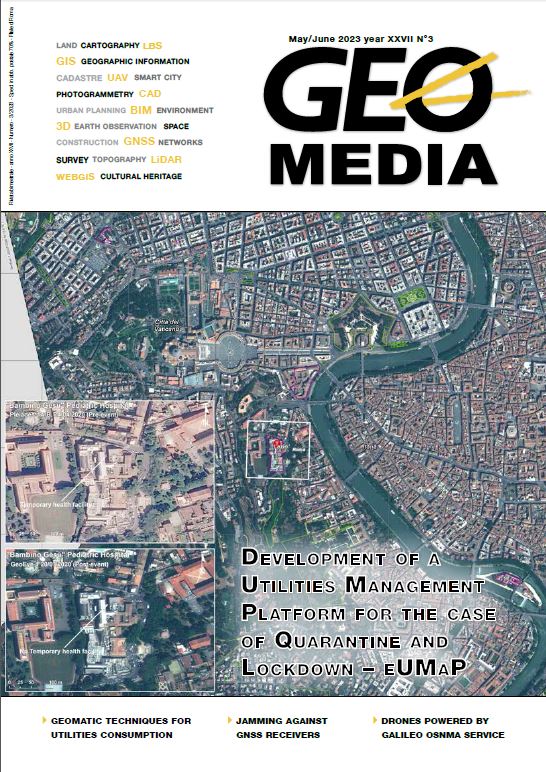Windows opening in naturally ventilated classrooms: management strategies to balance energy use and reduction of risk infection transmission
DOI:
https://doi.org/10.48258.6Keywords:
eumap, covid-19, indoor air qualityAbstract
The study presents a method to determine window opening time and frequency, considering window characteristics, indoor and outdoor conditions, and room occupancy.
Results reveal that opening time correlates with room surface and occupancy but diminishes with larger window areas and favourable discharge coefficients based on window types.
Additionally, in windless conditions, opening time decreases as the indooroutdoor temperature difference increases.
References
Awada, M. et al. (2021) ‘Ten questions concerning occupant health in buildings during normal operations and extreme events including the
COVID-19 pandemic’, Building and Environment, 188, p. 107480. Available at: https://doi.org/10.1016/j.buildenv.2020.107480.
Azuma, K. et al. (2020) ‘Environmental factors involved in SARS-CoV-2 transmission: effect and role of indoor environmental quality in the strategy
for COVID-19 infection control’, Environmental Health and Preventive Medicine, 25(1), p. 66. Available at: https://doi.org/10.1186/s12199-020-
-2.
Bluyssen, P.M. (2020) ‘Towards an integrated analysis of the indoor environmental factors and its effects on occupants’, Intelligent Buildings
International, 12(3), pp. 199–207.Available at: https://doi.org/10.1080/17508975.2019.1599318.
Brandan, M.A.M. and Espinosa, F.A.D. (2018) ‘Modelling natural ventilation in early and late design stages: developing the right simulation workflow with the right inputs’, in. 2018 Building Performance Analysis Conference and SimBuild co-organized by ASHRAE and IBPSA-USA, Chicago, USA, pp. 242– 249. Available at: https://www.ashrae.org/File%20Library/Conferences/Specialty%20Conferences/2018%20Building%20Performance%20Analysis%20Conference%20and%20SimBuild/Papers/C034.pdf.
BS 5925 (1991) Code of practice for ventilation principles and designing for natural ventilation.
Dai, H. and Zhao, B. (2020) ‘Association of the infection probability of COVID-19 with ventilation rates in confined spaces’, Building Simulation,
(6), pp. 1321–1327. Available at: https://doi.org/10.1007/s12273-020-0703-5.
DM 18-12-1975 (1975) ‘Norme tecniche aggiornate relative all’edilizia scolastica, ivi compresi gli indici di funzionalità didattica, edilizia ed urbanistica, da osservarsi nella esecuzione di opere di edilizia scolastica’.
ECDC (2020) ‘Heating, ventilation and air-conditioning systems in the context of COVID-19: first update’.
first-update.pdf.
Fantozzi, F. et al. (2022) ‘Monitoring CO2 concentration to control the infection probability due to airborne transmission in naturally ventilated
university classrooms’, Architectural Science Review, pp. 1–13. Available at: https://doi.org/10.1080/00038628.2022.2080637.
Hamner, L. et al. (2020) ‘High SARS-CoV-2 Attack Rate Following Exposure at a Choir Practice — Skagit County, Washington, March 2020’, Morbidity and Mortality Weekly Report, 69(19), pp. 606–610. Available at: http://dx.doi.org/10.15585/mmwr.mm6919e6external icon.
Li, Y. et al. (2020) ‘Evidence for probable aerosol transmission of SARS-CoV-2 in a poorly ventilated restaurant’, medRxiv, p. 2020.04.16.20067728. Available at: https://doi.org/10.1101/2020.04.16.2 0067728.
Lipinski, T. et al. (2020) ‘Review of ventilation strategies to reduce the risk of disease transmission in high occupancy buildings’, International
Journal of Thermofluids, 7–8, p. 100045. Available at: https://doi.org/10.1016/j.ijft.2020.100045.
Lu, J. et al. (2020) ‘COVID-19 Outbreak Associated with Air Conditioning in Restaurant, Guangzhou, China, 2020’, Emerging
Infectious Disease journal, 26(7), p. 1628. Available at: https://doi.org/10.3201/eid2607.200764.
Morawska, L. et al. (2020) ‘How can airborne transmission of COVID-19 indoors be minimised?’, Environment International, 142, p. 105832.
Available at: https://doi.org/10.1016/j.envint.2020.105832.
Noorimotlagh, Z. et al. (2021) ‘A systematic review of possible airborne transmission of the COVID-19 virus (SARS-CoV-2) in the indoor air
environment’, Environmental Research, 193, p. 110612. Available at: https://doi.org/10.1016/j.envres.2020.110612.
Park, S.Y. et al. (2020) ‘Coronavirus Disease Outbreak in Call Center, South Korea’, Emerging Infectious Disease journal, 26(8), p. 1666.
Available at: https://doi.org/10.3201/eid2608.201274.
Peng, Z. and Jimenez, J.L. (2020) ‘Exhaled CO2 as COVID-19 infection risk proxy for different indoor environments and activities’, medRxiv,
p. 2020.09.09.20191676. Available at: https://doi.org/10.1101/2020.09.09.2 0191676.
UNI 10339 (1995) Impianti aeraulici al fini di benessere. Generalità, classificazione e requisiti. Regole per la richiesta d’offerta, l’offerta, l’ordine e la
fornitura.
Yao, M. et al. (2020) ‘On airborne transmission and control of SARS-Cov-2’, Science of The Total Environment, 731, p. 139178. Available at: https://doi.org/10.1016/j.scitotenv.2020.139178.
Downloads
Published
How to Cite
Issue
Section
License

This work is licensed under a Creative Commons Attribution-NonCommercial-ShareAlike 4.0 International License.
Gli autori che pubblicano su questa rivista accettano le seguenti condizioni:- Gli autori mantengono i diritti sulla loro opera e cedono alla rivista il diritto di prima pubblicazione dell'opera, contemporaneamente licenziata sotto una Licenza Creative Commons - Attribuzione che permette ad altri di condividere l'opera indicando la paternità intellettuale e la prima pubblicazione su questa rivista.
- Gli autori possono aderire ad altri accordi di licenza non esclusiva per la distribuzione della versione dell'opera pubblicata (es. depositarla in un archivio istituzionale o pubblicarla in una monografia), a patto di indicare che la prima pubblicazione è avvenuta su questa rivista.
- Gli autori possono diffondere la loro opera online (es. in repository istituzionali o nel loro sito web) prima e durante il processo di submission, poiché può portare a scambi produttivi e aumentare le citazioni dell'opera pubblicata (Vedi The Effect of Open Access).





